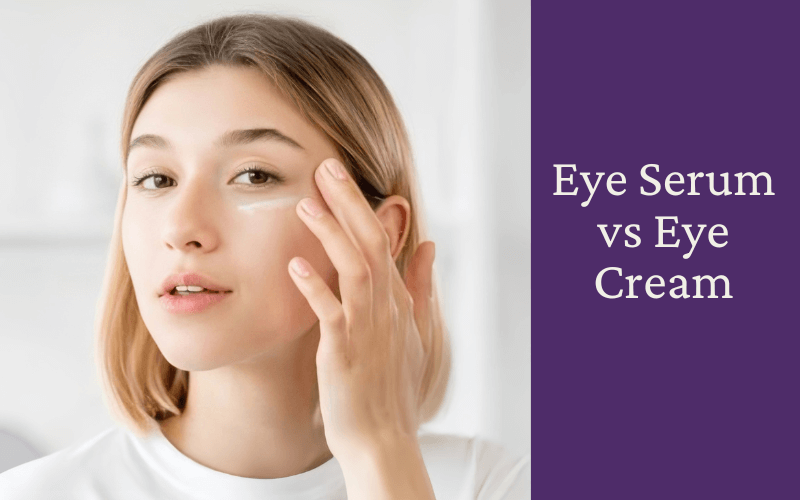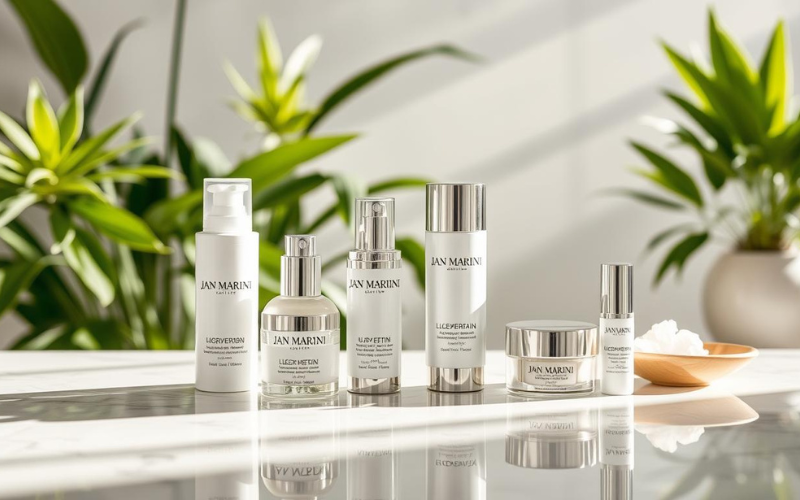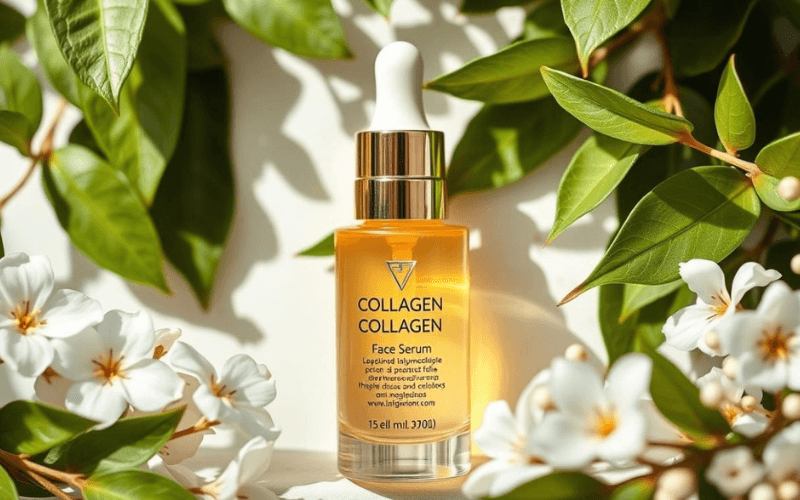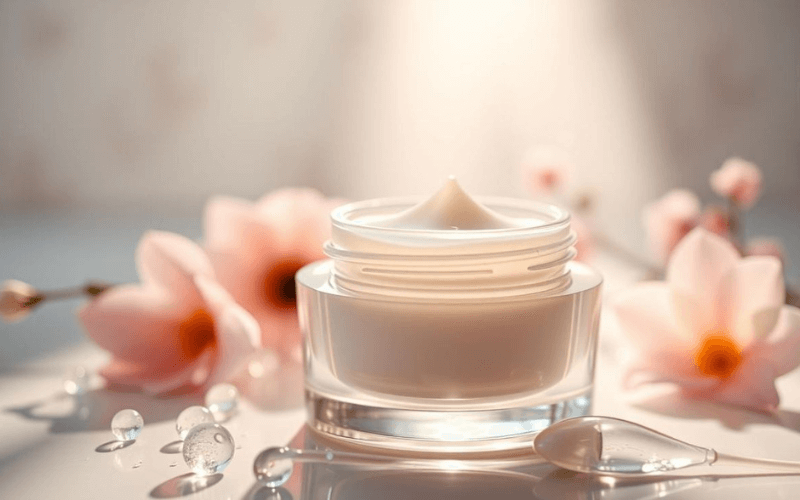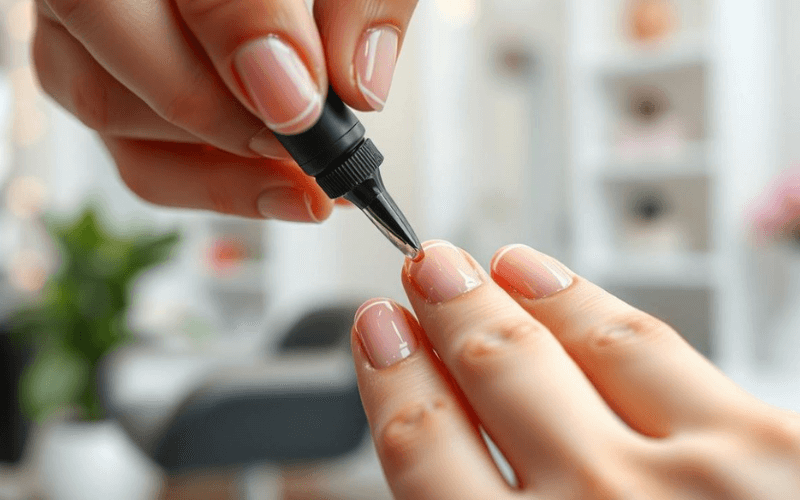The delicate skin around your eyes is one of the first areas to show signs of aging, including fine lines, wrinkles, dark circles, and puffiness.
This is because the skin is thinner and lacks the oil glands found in other parts of the face, making it more prone to dehydration and damage.
When tackling these concerns, many are left wondering: Eye Serum vs Eye Cream — which is better for anti-aging results?
In this comprehensive guide, we’ll explore the key differences between eye serums and eye creams, their unique benefits, and top product recommendations to help you make the best choice for your skincare routine.
- Eye Serum vs Eye Cream: Understanding the Basics
- Eye Serum vs. Eye Cream: Which Is Better for Anti-Aging?
- How to Incorporate Eye Serums and Eye Creams into Your Routine
- Top Product Recommendations
- The Science Behind Anti-Aging Eye Care Ingredients
- Common Mistakes to Avoid When Using Eye Serums and Creams
- Pro Tips for Maximizing Eye Care Results
- When to Start Using Anti-Aging Eye Products
- How Diet and Lifestyle Impact Eye Health
- FAQs About Eye Serums and Eye Creams
- Conclusion
Eye Serum vs Eye Cream: Understanding the Basics
What is an Eye Serum?
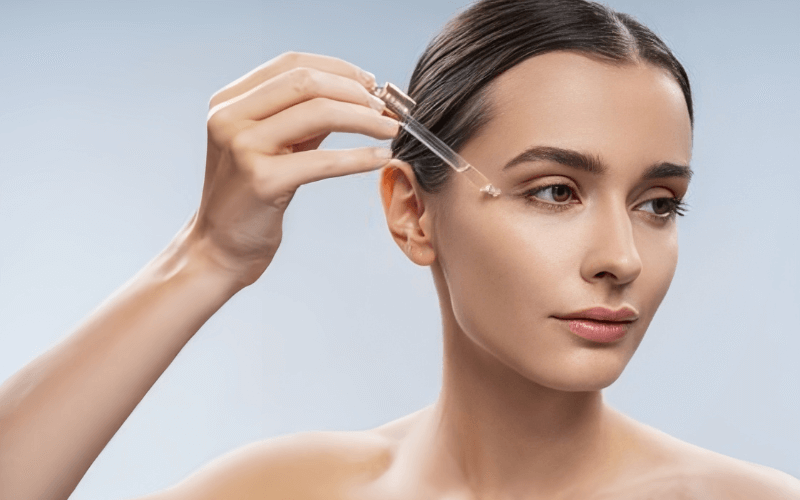
Eye serums are lightweight, fast-absorbing products that contain high concentrations of active ingredients. Their primary function is to deliver potent anti-aging ingredients deeper into the skin. Since serums have a thinner consistency compared to creams, they are designed to penetrate the skin quickly and efficiently, targeting specific concerns such as wrinkles, dark circles, and puffiness.
Some of the key ingredients often found in eye serums include:
- Hyaluronic Acid: For intense hydration and skin plumping.
- Retinol: A powerful anti-aging ingredient that boosts collagen production and reduces fine lines.
- Vitamin C: Known for its brightening properties, it helps lighten dark circles.
- Peptides: Stimulate collagen and elastin production to firm the skin.
- Caffeine: Reduces puffiness and tightens the skin.
What is an Eye Cream?
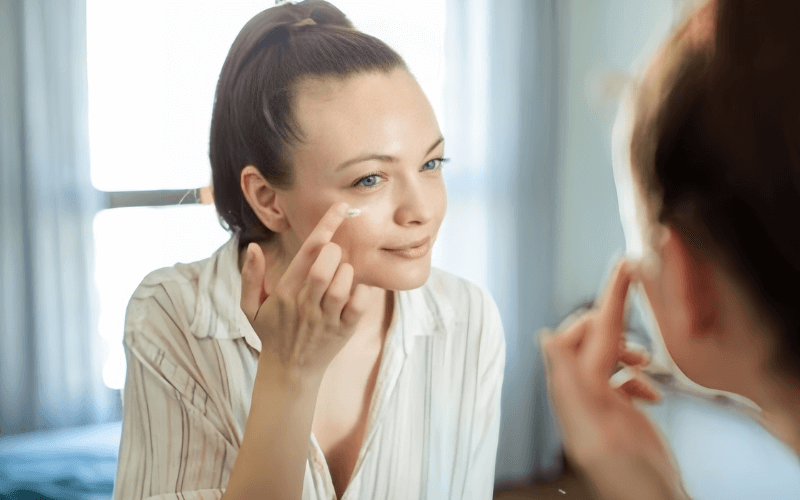
Eye creams, on the other hand, are thicker and more moisturizing. They focus on providing hydration, soothing the skin, and creating a protective barrier. Eye creams are ideal for addressing surface-level concerns like dryness, while also providing some anti-aging benefits, particularly for people with dry or sensitive skin.
Common ingredients found in eye creams include:
- Ceramides: To lock in moisture and strengthen the skin barrier.
- Shea Butter: Provides deep nourishment for dry skin.
- Niacinamide: Reduces inflammation and improves skin texture.
- Caffeine: Like in serums, it helps reduce puffiness.
- Antioxidants: Protect the skin from environmental damage and aging.
Eye Serum vs. Eye Cream: Which Is Better for Anti-Aging?
1. Targeting Fine Lines and Wrinkles
One of the most noticeable signs of aging is the appearance of fine lines and wrinkles around the eyes. As the skin ages, it loses elasticity, collagen, and moisture, leading to deeper wrinkles over time.
- Eye Serum for Fine Lines and Wrinkles: Serums are highly effective at targeting wrinkles because of their concentrated active ingredients. Products like The Ordinary Caffeine Solution 5% + EGCG contain high levels of caffeine and antioxidants, which tighten the skin and reduce the appearance of fine lines. Another popular choice is Obagi Elastiderm Eye Cream, which features peptides and blueberry extract to improve elasticity and firm the skin.
- Eye Cream for Fine Lines and Wrinkles: Eye creams provide essential moisture, which helps to temporarily plump the skin and minimize the appearance of fine lines. Products like Kiehl’s Creamy Eye Treatment with Avocado hydrate and nourish the skin with ingredients like avocado oil and shea butter. While creams are great for hydration, they may not be as potent as serums in addressing deep wrinkles.
Verdict: If you’re looking for long-term results in reducing fine lines and wrinkles, eye serums like Retinol Correxion Eye Cream by RoC are more effective due to their ability to penetrate deeper layers of the skin. For an extra boost, layering a hydrating eye cream on top can enhance the benefits and keep the area moisturized.
2. Fighting Dark Circles
Dark circles can make you look tired and older, often caused by genetics, lack of sleep, or thinning skin that exposes the blood vessels beneath.
- Eye Serum for Dark Circles: Eye serums containing Vitamin C or caffeine can help brighten the under-eye area and reduce discoloration. Products like Ole Henriksen Banana Bright Eye Crème are famous for their brightening effects. Vitamin C helps boost collagen production and lighten pigmentation, making this an excellent choice for dark circles.
- Eye Cream for Dark Circles: Creams that contain ingredients like niacinamide and peptides also work well to combat dark circles. The Sunday Riley Auto Correct Brightening and Depuffing Eye Contour Cream contains caffeine, horse chestnut, and peptides that help reduce puffiness and brighten the eye area over time.
Verdict: For stubborn dark circles, an eye serum like Drunk Elephant C-Tango Multivitamin Eye Cream with Vitamin C is a more effective option due to its higher concentration of brightening ingredients. However, combining it with a cream for hydration can enhance results.
3. Dealing with Puffiness
Puffiness, or under-eye bags, is often caused by fluid retention, lack of sleep, or aging. Reducing puffiness helps create a more youthful and refreshed look.
- Eye Serum for Puffiness: Eye serums that contain caffeine are excellent for depuffing the under-eye area. Caffeine constricts blood vessels, reducing the swelling and puffiness that causes the bags under your eyes. One of the best products for this is the Clarins Extra-Firming Eye Serum, which not only reduces puffiness but also firms the skin.
- Eye Cream for Puffiness: Eye creams with cooling ingredients like cucumber extract can soothe and reduce puffiness. La Roche-Posay Hydraphase Intense Eyes is a popular option, as it contains thermal spring water to cool and hydrate the area, reducing the appearance of under-eye bags.
Verdict: For immediate relief from puffiness, an eye serum with caffeine like Ordinary Caffeine Solution 5% + EGCG is often more effective due to its quick absorption and targeted action. Pairing it with a hydrating cream helps soothe and lock in moisture.
4. Moisturizing the Skin
As we age, the skin around our eyes tends to become dry and fragile, contributing to a crepey appearance. Keeping the area moisturized is essential for reducing the appearance of fine lines and maintaining skin elasticity.
- Eye Serum for Moisturization: While some eye serums contain hydrating ingredients like hyaluronic acid, they are not as moisturizing as creams. Serums focus more on delivering active ingredients deep into the skin rather than providing surface hydration.
- Eye Cream for Moisturization: Eye creams excel in delivering long-lasting moisture, making them ideal for those with dry or dehydrated skin. Drunk Elephant Shaba Complex Eye Serum contains black tea ferment and niacinamide to nourish the skin and lock in moisture, while Biossance Squalane + Peptide Eye Gel hydrates deeply and smooths the delicate under-eye area.
Verdict: If you’re looking to hydrate and plump the under-eye area, eye creams are the best choice. However, you can use a hydrating serum with hyaluronic acid underneath a cream for maximum moisture retention.
How to Incorporate Eye Serums and Eye Creams into Your Routine
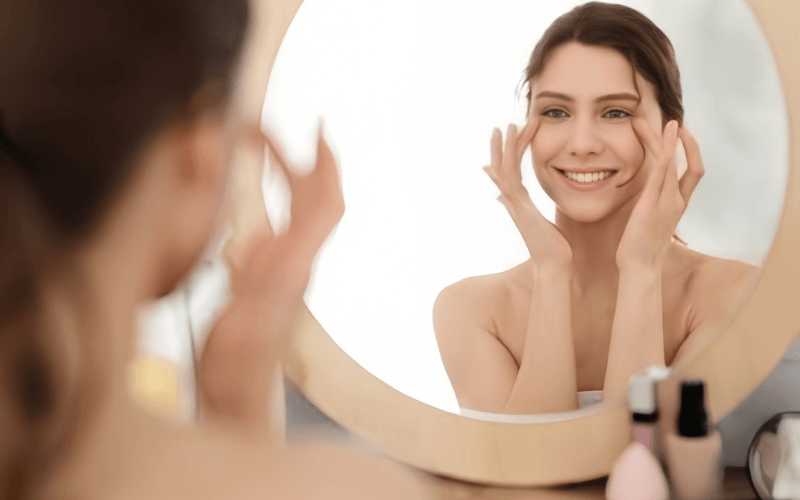
For the best results, it’s not a question of eye serum vs. eye cream — often, the most effective approach is to use both. Here’s a simple guide to incorporating both into your skincare routine:
- Cleanse Your Face: Start with a gentle facial cleanser to remove dirt, oil, and makeup.
- Apply Eye Serum: After cleansing, apply a few drops of your chosen eye serum. Use your ring finger to gently tap the serum into the skin around your eyes, focusing on areas with fine lines or dark circles.
- Apply Eye Cream: Once the serum has absorbed, apply an eye cream to lock in moisture. This step is particularly important if you have dry or sensitive skin.
- Sun Protection: For your morning routine, always finish with a broad-spectrum sunscreen to protect your skin from UV damage, which can accelerate signs of aging.
Using an eye serum and an eye cream together provides comprehensive care: the serum penetrates deep into the skin to treat issues like fine lines and dark circles, while the cream hydrates and protects the surface.
Top Product Recommendations
To help you choose the right products for your skin, here are some top-rated eye serums and creams:
- Best for Wrinkles: RoC Retinol Correxion Eye Cream (serum) + Kiehl’s Creamy Eye Treatment with Avocado (cream)
- Best for Dark Circles: Drunk Elephant C-Tango Multivitamin Eye Cream (serum) + Sunday Riley Auto Correct Eye Cream (cream)
- Best for Puffiness: The Ordinary Caffeine Solution 5% (serum) + La Roche-Posay Hydraphase Intense Eyes (cream)
- Best for Hydration: Biossance Squalane + Peptide Eye Gel (cream) + Obagi Elastiderm Eye Serum(serum)
The Science Behind Anti-Aging Eye Care Ingredients
Both eye serums and eye creams are packed with scientifically proven ingredients to target specific skin concerns. Understanding what these ingredients do can help you make an informed choice when selecting products.
- Retinol: Known as the gold standard in anti-aging, retinol is a derivative of Vitamin A that speeds up cell turnover and stimulates collagen production. It’s particularly effective in reducing the appearance of fine lines and wrinkles. However, retinol can be irritating for sensitive skin, so it’s often best used in a serum combined with a hydrating cream.
- Hyaluronic Acid: This is a powerful hydrating ingredient that can hold up to 1,000 times its weight in water. Hyaluronic acid works by attracting moisture to the skin, plumping it up and reducing the appearance of fine lines. It’s commonly found in both serums and creams and is perfect for those with dry or aging skin.
- Peptides: These short chains of amino acids help to rebuild the skin’s structural proteins like collagen and elastin. Peptides are essential in maintaining the skin’s firmness and elasticity, making them a popular ingredient in eye serums for those concerned about sagging skin or crow’s feet.
- Niacinamide: A form of Vitamin B3, niacinamide is a multi-tasking ingredient that reduces inflammation, improves skin tone, and strengthens the skin’s barrier. It’s commonly found in both serums and creams and is a great option for brightening dark circles and calming puffiness.
- Caffeine: Caffeine is a superstar for de-puffing and tightening the under-eye area. By constricting blood vessels, it helps reduce swelling and fluid retention, making it ideal for those struggling with puffiness or under-eye bags.
Understanding how these ingredients work will help you select products that align with your skin’s needs. For example, if you’re struggling with fine lines and dullness, you might look for a retinol-based serum paired with a hyaluronic acid-rich cream for maximum anti-aging benefits.
Common Mistakes to Avoid When Using Eye Serums and Creams
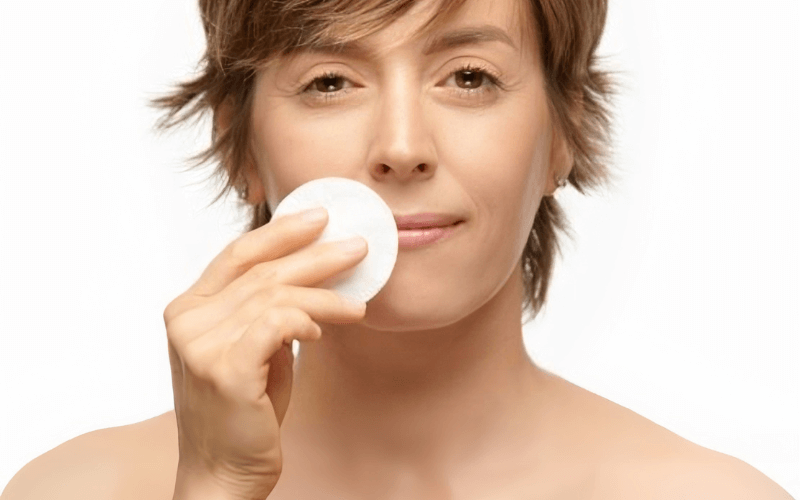
Even the best eye serum or cream won’t give you the desired results if not applied correctly. Here are some common mistakes people make with these products and how to avoid them:
- Applying Too Much Product: Less is more when it comes to eye serums and creams. The skin around the eyes is delicate, and over-applying products can lead to irritation. Use a pea-sized amount of product for both eyes—this is usually enough to cover the entire under-eye area.
- Using Heavy Motions: Never rub the skin around your eyes. Instead, gently pat the serum or cream into the skin using your ring finger. The ring finger applies the least pressure, making it ideal for the delicate eye area.
- Skipping Sunscreen: Many anti-aging ingredients, especially retinol and Vitamin C, can make your skin more sensitive to the sun. Always follow up your morning routine with a broad-spectrum sunscreen to protect your under-eye area from UV damage, which accelerates aging.
- Not Being Consistent: Consistency is key for seeing results with any skincare product, and eye serums and creams are no exception. These products are designed to deliver long-term results, so using them daily, both morning and night, is crucial for achieving youthful, radiant skin.
Pro Tips for Maximizing Eye Care Results
To get the most out of your eye serum and eye cream, here are a few expert tips to incorporate into your routine:
- Layering for Maximum Effectiveness: If you’re dealing with multiple concerns (e.g., wrinkles and dark circles), you don’t have to choose between an eye serum and an eye cream. You can use both by layering them. Start with the serum to deliver concentrated active ingredients deep into the skin, then follow up with a moisturizing eye cream to lock in hydration and protect the skin’s surface.
- Incorporate a Cooling Massage: For puffiness, applying your eye serum or cream with a cooling metal roller or a jade roller can enhance the product’s effects. The cooling sensation helps to constrict blood vessels and further reduce swelling. Massaging the under-eye area also boosts circulation, which helps with dark circles and puffiness.
- Store Products in the Fridge: To boost the de-puffing effects of your eye cream or serum, consider storing it in the refrigerator. The cool temperature not only feels refreshing but also helps reduce inflammation and puffiness when applied.
- Choose Products Based on Time of Day: For optimal results, use an eye serum with brightening ingredients like Vitamin C in the morning to reduce dark circles and combat free radicals throughout the day. At night, switch to an eye serum with retinol or peptides to repair and rejuvenate the skin while you sleep. Follow both with a nourishing eye cream to keep the area hydrated and plump.
When to Start Using Anti-Aging Eye Products
The earlier you start incorporating eye serums and creams into your skincare routine, the better. Most dermatologists recommend introducing eye care products in your mid-to-late 20s, as this is when collagen production begins to slow down, and the first signs of aging may start to appear.
However, if you’re already in your 30s or 40s, it’s never too late to begin using anti-aging eye products. The sooner you address concerns like fine lines, wrinkles, and dark circles, the easier it will be to prevent them from worsening. Eye serums with retinol or peptides can help restore lost collagen, while hydrating eye creams will protect the skin’s moisture barrier, helping your eyes look youthful and refreshed.
How Diet and Lifestyle Impact Eye Health
While serums and creams can work wonders for your skin, it’s important to remember that diet and lifestyle also play a crucial role in maintaining healthy, youthful eyes. Here are a few ways to support your skin from the inside out:
- Hydration: Drink plenty of water to keep your skin hydrated. Dehydration can make fine lines more pronounced and contribute to puffiness around the eyes.
- Sleep: A lack of sleep can lead to dark circles and puffiness. Aim for 7-9 hours of quality sleep each night to allow your skin to regenerate and recover.
- Diet: Eating a diet rich in antioxidants and healthy fats (like Omega-3s) can support skin health. Foods like salmon, avocado, and leafy greens can provide essential nutrients that help reduce inflammation and maintain the skin’s elasticity.
- Avoid Excessive Alcohol and Salt: Both alcohol and salt can contribute to puffiness and fluid retention. Reducing your intake can help minimize under-eye bags and swelling.
FAQs About Eye Serums and Eye Creams
Q: Can I use an eye serum and an eye cream together?
A: Yes, using both an eye serum and an eye cream together can enhance the effectiveness of your skincare routine. Apply the serum first to allow its active ingredients to penetrate deeply, then follow with a cream to lock in moisture and protect the skin.
Q: How long will it take to see results from an eye serum or eye cream?
A: Results can vary depending on the product and your specific skin concerns. You may notice immediate improvements in hydration and puffiness, but it can take 4-6 weeks of consistent use to see significant changes in fine lines, dark circles, and overall skin texture.
Q: Should I use different products for day and night?
A: Yes, it’s a good idea to use different eye care products based on the time of day. In the morning, choose a serum with antioxidants like Vitamin C to protect against free radicals, and follow with a lightweight, hydrating eye cream. At night, focus on serums with retinol or peptides to repair and rejuvenate, followed by a rich, moisturizing eye cream.
Conclusion
Both eye serums and eye creams play essential roles in an anti-aging skincare routine, each offering distinct benefits. Eye serums deliver potent, concentrated ingredients deep into the skin, making them more effective for addressing issues like fine lines, wrinkles, and dark circles. Eye creams, on the other hand, provide essential hydration, soothe the skin, and act as a protective barrier.
For optimal results, it’s often best to use both an eye serum and an eye cream in your routine. This combination will allow you to tackle multiple concerns at once, from fine lines and puffiness to hydration and brightening. By carefully selecting the right products and using them consistently, you can achieve a youthful, refreshed, and healthy appearance around your eyes.

